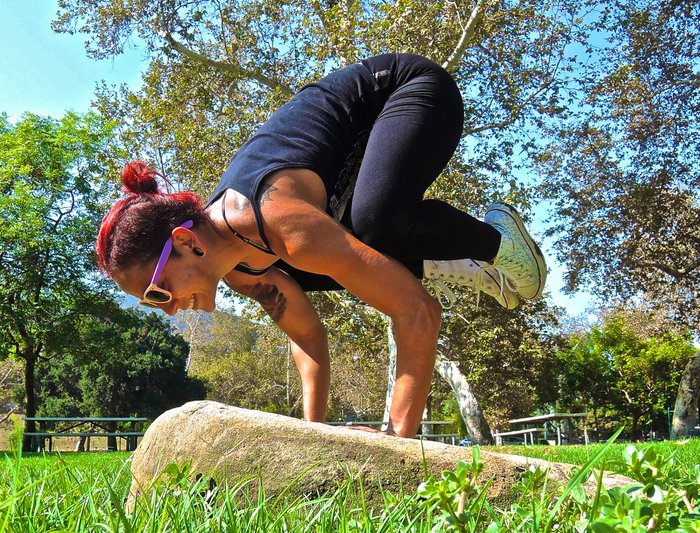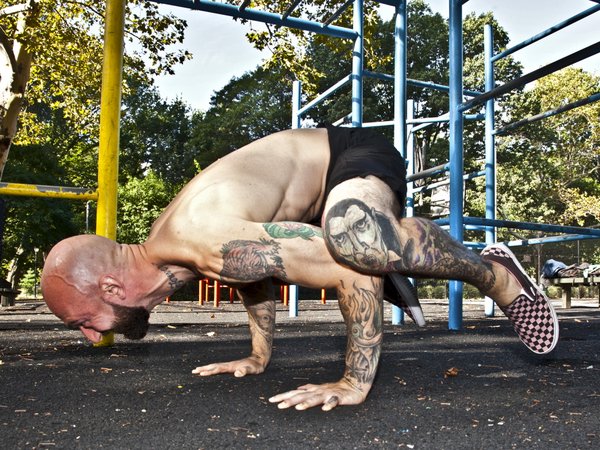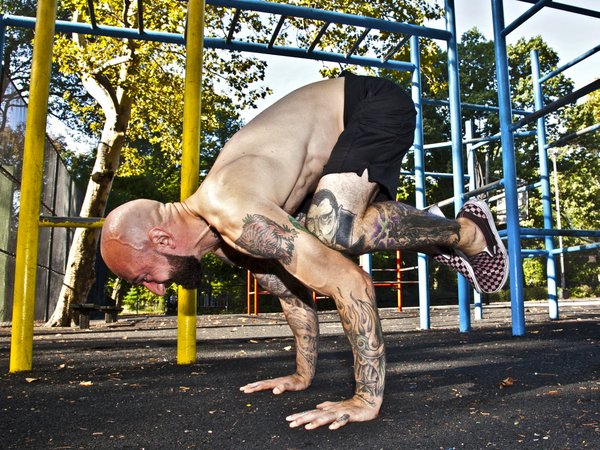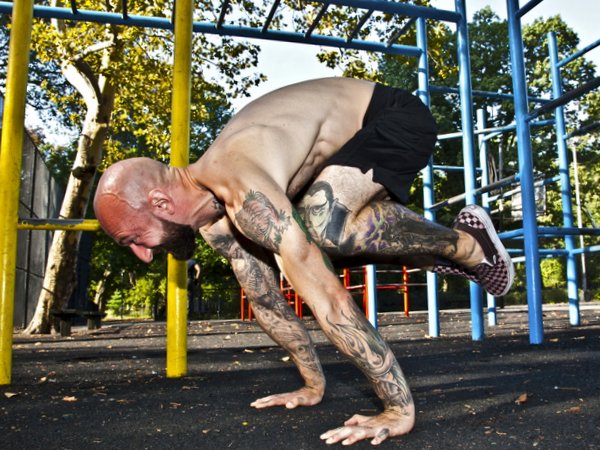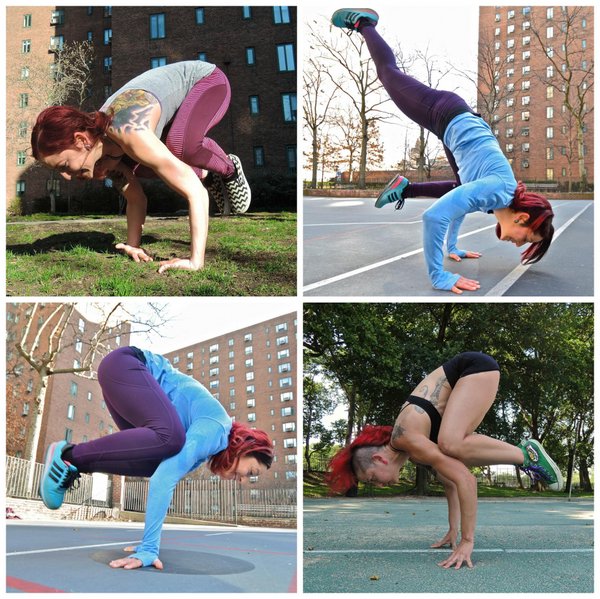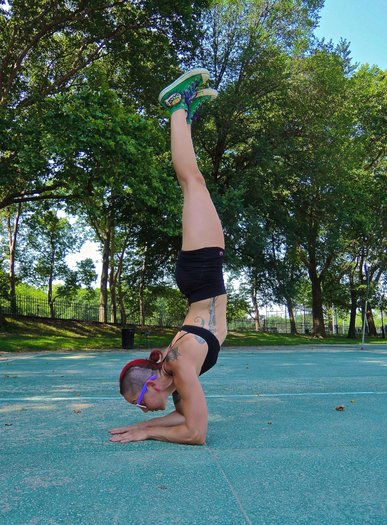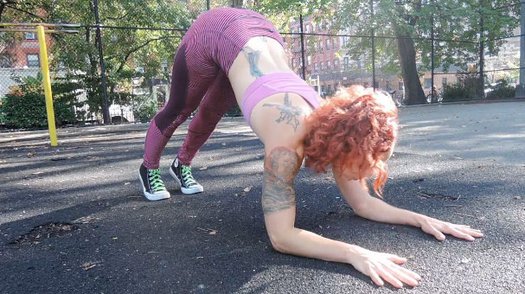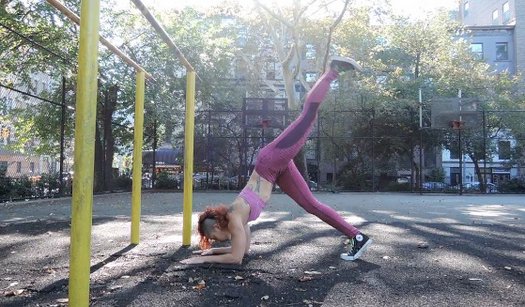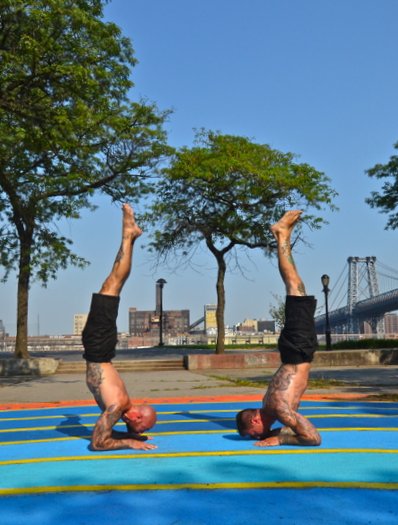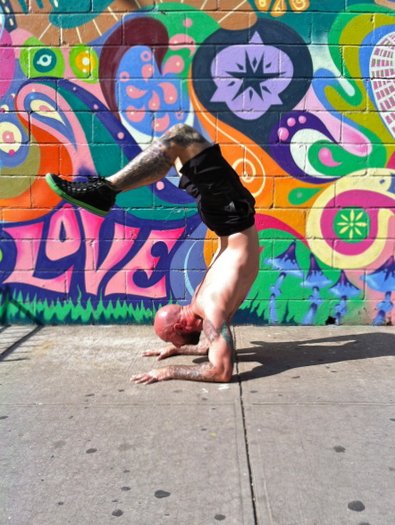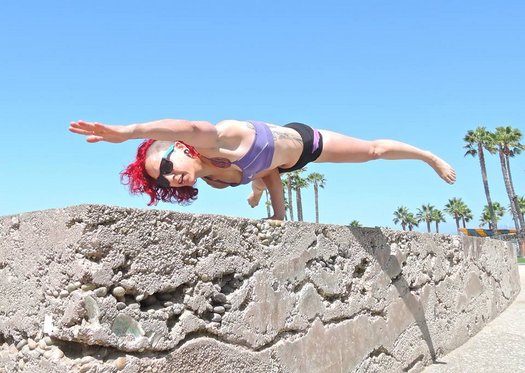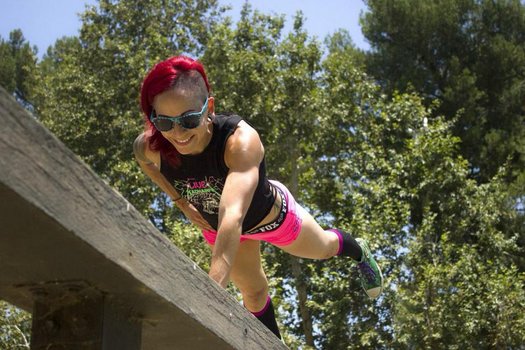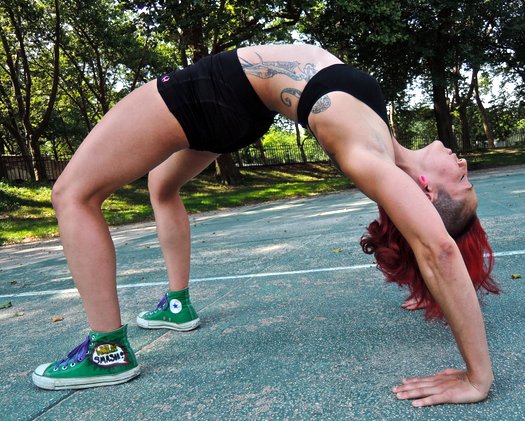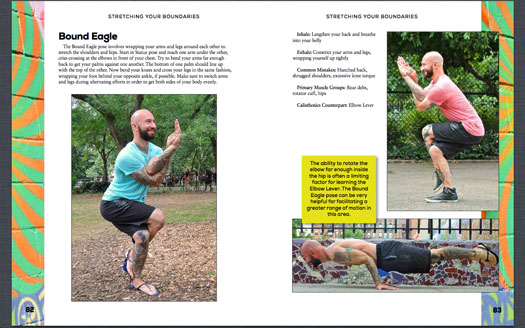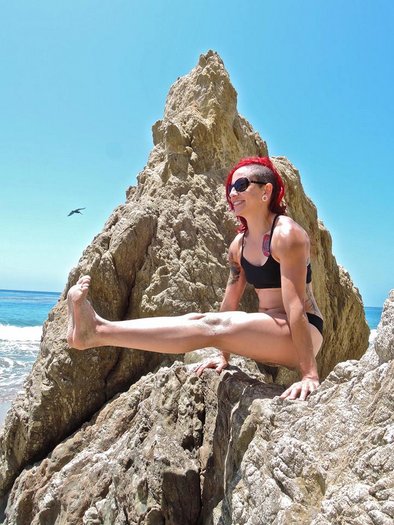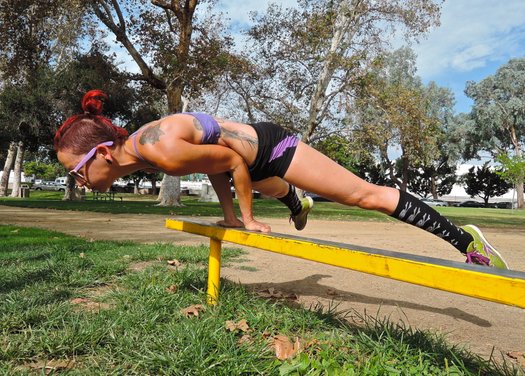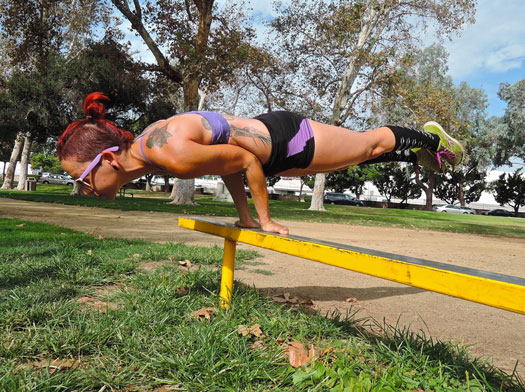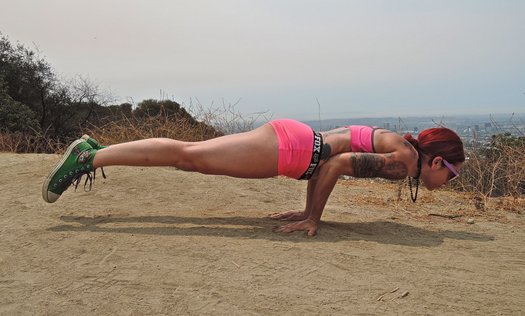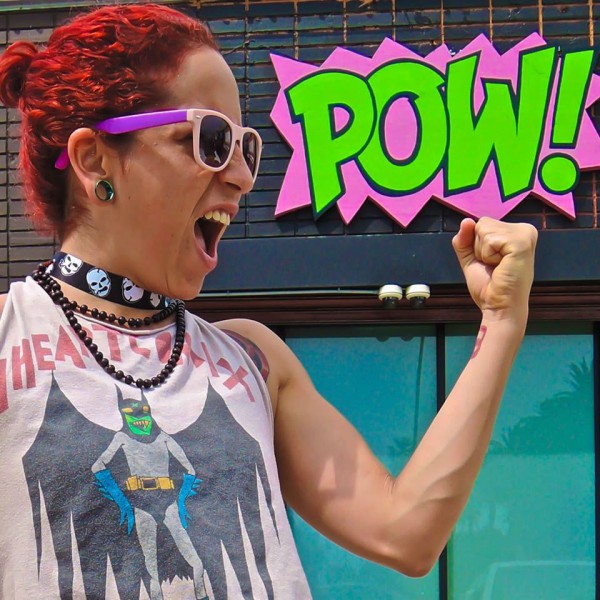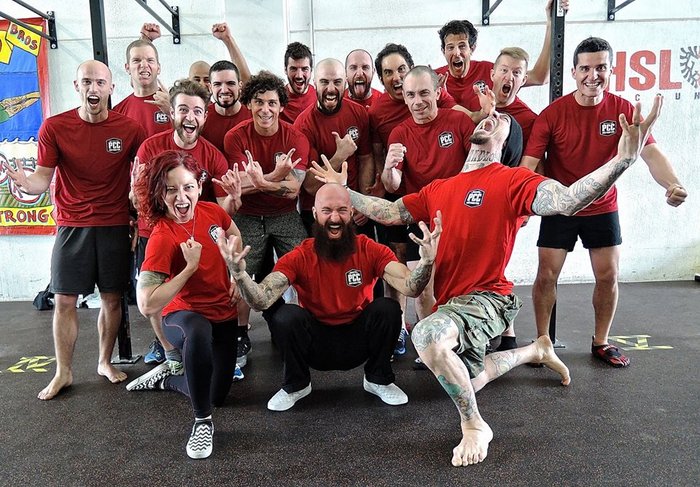
In the last year, I’ve had the opportunity to assist at 4 PCC events throughout the US and Europe. Attendees often come in feeling like they’re the only ones in their town practicing Progressive Calisthenics, but leave knowing they’ve found a community of people to which they now belong.
Ever since I attended my first PCC workshop exactly one year ago, I’ve felt my confidence skyrocket. Though my self image has improved, the way I approach training myself and my clients has transformed even more. PCC makes you see the world as your playground and reminds you that anyone can train ANYWHERE! There is something truly liberating about having that realization, because it constantly encourages you to push your own limits.
Some of the moves we teach at PCC are not for the faint of heart, but you’ll feel empowered with the encouragement of everyone else in attendance to at least give it a shot. Sometimes you even surprise yourself!
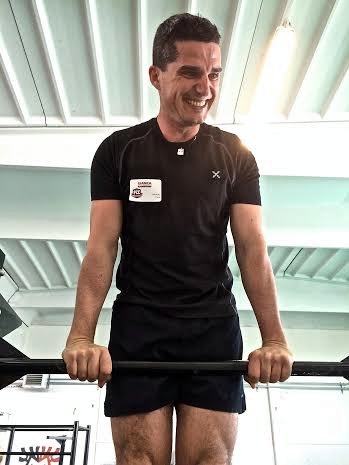
People who aren’t trainers also leave knowing that something in them has changed. They’ve allowed themselves to be courageous, to go into the unknown, ready to succeed, or fail – and not worrying – because they’ve earned the confidence to try.
I’ve seen everyone from fitness trainers and martial artists, to computer programmers and accountants smash the Century test. Though on Day 1 some have assumed they would humbly fail, the collective energy of the group takes over. No matter how large or small, passing the Century is achievable for anyone willing to put in the work.
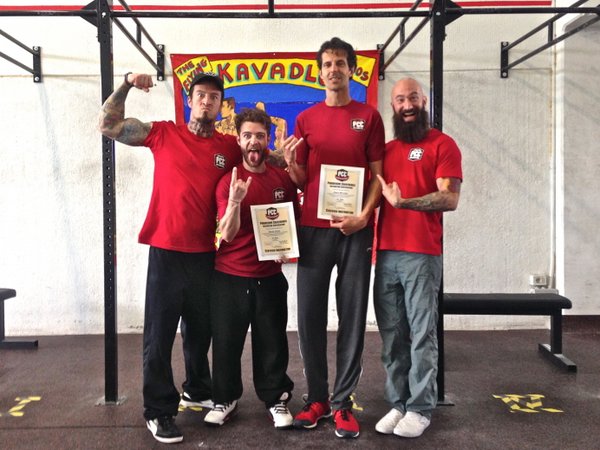
There’s nothing dogmatic about the way the Kavadlo bros present their workshop, which is part of what makes it so appealing. Everyone from Crossfitters to pole dancers can relate to the curriculum. The brothers make it a point not to knock any other fitness modality in favor of bodyweight training.
In fact, the Kavadlos encourage people to move in whatever way makes them feel best. They emphasize the fact that there are no special hacks, tricks, or programs that can magically make you get the muscle-up, pistol squat or neck bridge, but they provide the guidance and encouragement to help you achieve new skills.
Al and Danny will make you an offer you cannot refuse: Trust in yourself, practice, and the rest will follow.
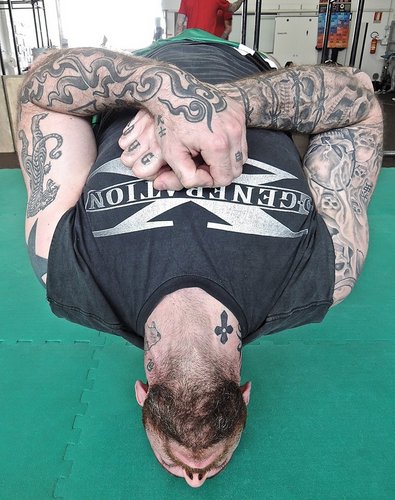
The looks on some of the attendees faces were priceless while succeeding at a move they thought perhaps they would be unable to do. At PCC, blowing your own mind is a constant theme.
I remember one attendee mentioning to me the day after the abs module, that he’d had a dream about how he could get one of the moves and wanted to try it once more. Using the techniques discussed on the previous day – and the power of the PCC – he totally scored! The dragon flag was his!
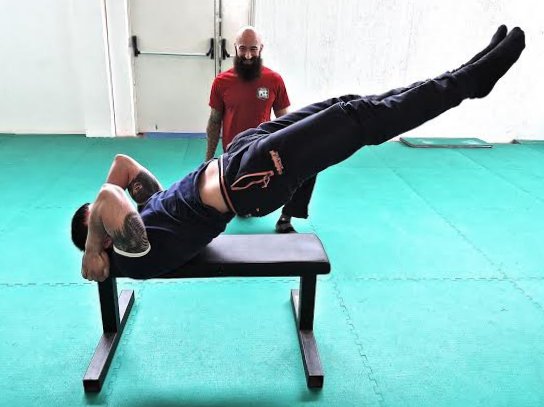
Since this was an international PCC, I went in thinking that language might be a barrier in teaching, but as the weekend wore on, I realized that calisthenics is a language unto itself. Having to demonstrate and teach each other with fewer words only made our bond stronger. By day two, connections were formed that made perfect strangers seem as if they had been life-long friends. The passion for calisthenics is the “glue” that brings us together.
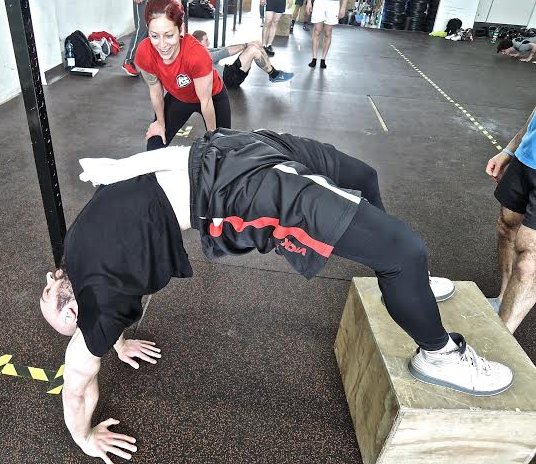
When I think back to my initial post-PCC experience, I remember having such a strong desire to search for bar parks in my area with the eagerness to start a calisthenics class shortly after. PCC ignites a fire in people that enthuses them about their training and makes them want to share the experience with others. The number of PRs at this workshop was staggering. Day 1 of PCC Italy was una maravilla! PRs on muscle-ups (including my own) as well as something completely unheard of in all of the PCC events thus far: 2 people achieved their first ONE ARM CHIN-UP!!
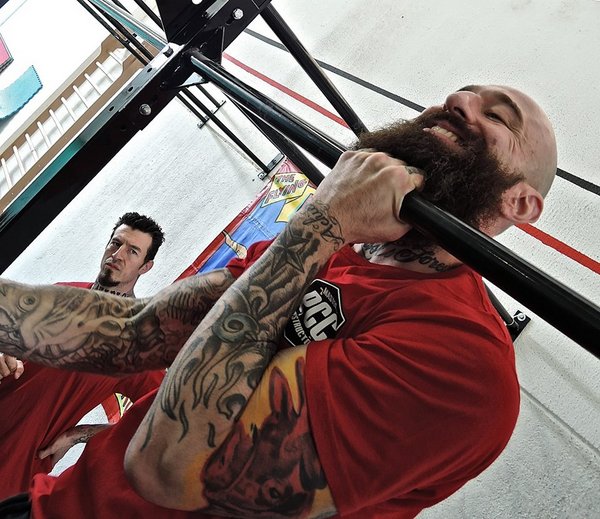
Progressive Calisthenics compliments all other expressions of fitness. Different ways of achieving the same thing – getting stronger using minimalist equipment: your body, the floor, and a basic bar. Since I’ve been practicing, I feel more comfortable being myself. I’ve even found myself wearing less make-up when going out!
If the name Convict Conditioning sounds intimidating to you, you have not met the same classy calisthenics gentlemen I have trained with at every one of these events. These guys will help you out anytime, and are more than happy to give you any assist and cheer you on – nothing like the dudes who hang out at those other bars!
Miracles happen when the collective energy at these workshops uplifts the rest of the group.
The legacy of PCC Italy will be a “pizza” history!
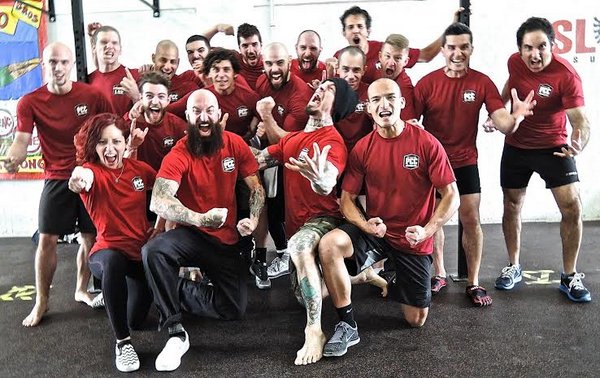
****
Grace Menendez, PCC, HKC is a personal trainer and group exercise instructor located in New York City. She is a columnist for Bodybuilding.com and can be seen in several Dragon Door books, including Coach Wade’s Explosive Calisthenics. For more information about Grace, check out her website, www.DieselGrace.com
